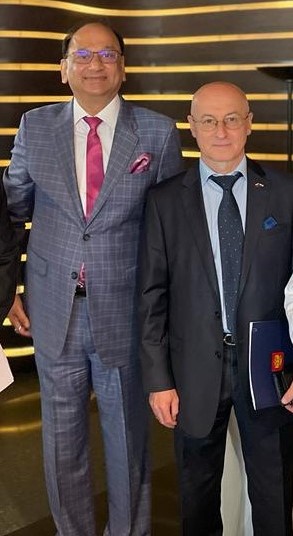In a big move to modernize its infantry combat vehicles, Indian Army plans to buy Futuristic Infantry Combat Vehicles
Heartiest Congratulations to the Ministry of Defence & the Indian Railways on Successful Trial Run of the Military Train, on Dedicated Freight Corridor: Tribhuvan Darbari, MD & CEO Texmaco
June 16, 2021Chinese S-400 systems across LAC, forces India to rethink air defence
June 28, 2021Amid Chinese aggression, the Indian Army is looking to replace its vintage infantry combat vehicles in service since the 1980s and has intimated the process to acquire a modern version of the platform more suited for troops in high-altitude areas of Sikkim and Ladakh.
The Indian Army on Wednesday published a detailed request for information (RFI) from suppliers soliciting proposals to supply futuristic infantry combat vehicles (FICV).
Since it has been already specified by the Indian Army that the FICVs will be procured in the spirit of ‘Make in India’ and ‘Atmanirbhar Bharat’ programs, Mr. Tribhuvan Darbari, Chairman CII Aerospace & Defence Subcommittee (ER) & Managing Director & Chief Executive Officer, Texmaco Defence Systems Private Limited (TDSPL) & Chief Executive, Texmaco Rail & Engineering Limited, said that it will open a new window of opportunities for Indian defense manufacturers.
Mr. Tribhuvan Darbari further said that the proposals to develop a replacement for the BMP-2 have been hanging fire for two decades. In the late 1990s, the DRDO began work on the ‘Abhay’, a technology demonstrator vehicle that would provide the basis to begin replacing the BMP-2. Multiple proposals have been put forth to develop the FICV as a public-private partnership, with initial figures saying up to 3,000 vehicles would be bought at a price of $10 billion. However, these proposals have not come to fruition.
Infantry combat vehicles, or infantry fighting vehicles as they are called in the west, are armored vehicles that are the main means of transport of ‘mechanized infantry’. These vehicles can carry anywhere from five to 10 soldiers into battle, while also being capable of engaging targets on the ground using guns and anti-tank missiles.
The RFI issued by the Indian Army specifies that it intends to procure up to 1,750 FICVs in three versions. The three versions are a ‘gun version’, a command version, and a command and surveillance version. The ‘gun version’, which is primarily meant for combat operations, will constitute the bulk of the intended order quantity (55 percent). Command versions of infantry combat vehicles are used by battlefield commanders to direct operations and correspond with superiors.
While the RFI specifies the gun version of the FICV should be capable of housing a crew of three and carrying at least eight soldiers, the remaining two variants should have a crew of three and should carry four soldiers.
The Indian Army RFI specifies that the FICV should be equipped with at least a 30mm main gun and anti-tank missiles. These weapons have been standard features on infantry combat vehicles in both the erstwhile Soviet bloc and the west since the 1980s. However, apparently accepting the changing trends in warfare, the Indian Army has specified that the command and command and surveillance versions of the FICV be capable of carrying drones for surveillance and also suicide strike missions (known as ‘loitering munitions’).
Loitering munitions
The Indian Army has specified that both FICV versions be capable of carrying loitering munitions that can attack moving targets, including ones that are armoured. The RFI specifies the loitering munitions be capable of providing real-time information back to the commander and gunner of the FICV.
Loitering munitions have attracted attention in recent years as a means of both surveillance and attack. Loitering munitions are significantly smaller than standard surveillance drones and can detect targets concealed by terrain. Azerbaijan made extensive use of loitering munitions of Israeli origin to strike Armenian forces in the war between both nations last year. Last year, it was reported that the Indian Army was mulling the purchase of an Israeli loitering munition called FireFly that could fit into a backpack.
Mini-UAV
In addition to loitering munitions, the Indian Army RFI specifies the command and surveillance version of the FICV carries one ‘mini’ UAV that is capable of vertical take-off and landing, like a helicopter. The RFI specifies the mini-UAV to be capable of endurance of at least 60 minutes and a range of 10km. The Indian Army has specified the UAV provides real-time color, high-definition imagery and video back to the FICV to “enable engagement by other weapon systems like Mortars, Loiter Munition, Artillery, Attack Helicopters, etc”.
Deployment plan
The Indian Army intends to use the FICV to replace the 1980s-vintage BMP-2, which is a Soviet-designed infantry combat vehicle.
The Indian Army intends to deploy the FICV on the “plain and desert terrain as occurring along Western Borders of India and High Altitude (up to 5000 meters altitude)/Mountain terrain as occurring along Northern Borders (Eastern Ladakh/ Central Sector / North Sikkim) of India”.
Sources:

